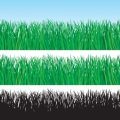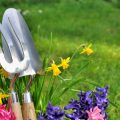1. Understanding the Basics: Why Plant Care Matters
Taking care of plants is about more than just watering them and hoping for the best. Whether you’re growing tomatoes in your backyard, nurturing a houseplant on your windowsill, or planting flowers along your front walk, understanding some simple plant care techniques can make a huge difference. Three of the most important methods for helping plants thrive are pruning, pinching, and deadheading. These terms might sound intimidating if you’re new to gardening, but they’re actually easy to learn and incredibly effective.
Proper plant care helps your garden look neat and healthy, keeps your plants strong, and encourages better blooms or fruit production. When you know how and when to prune, pinch, or deadhead, you’ll be able to guide your plants toward their best shape and performance. In American gardens, these techniques are common practice—not just for pros, but for beginners too!
What Do These Terms Mean?
| Term | What It Means | Main Benefit |
|---|---|---|
| Pruning | Cutting away certain parts of a plant (like branches or stems) | Shapes the plant & removes dead/diseased growth |
| Pinching | Using fingers to remove the growing tip of a stem | Makes plants bushier & encourages more branches |
| Deadheading | Removing spent flowers after they fade | Keeps plants tidy & promotes more blooms |
Why Are These Techniques Important?
The main reason gardeners use these techniques is to keep their plants looking good and performing well. By regularly pruning, pinching, and deadheading, you can control how big your plants get, encourage fuller growth, and help prevent problems like disease or pest infestations. Plus, it just feels good to see your garden flourish as a result of your care!
2. Pruning: Shaping and Strengthening Your Plants
Pruning is one of the most essential plant care practices for any American home gardener, whether you’re growing roses in your backyard or tomatoes on your porch. But what exactly does pruning mean? Simply put, pruning is the act of selectively cutting away parts of a plant—like branches, stems, or leaves—to encourage healthy growth, improve appearance, and help your plants thrive.
What Is Pruning?
Pruning involves removing dead, damaged, or overgrown parts of a plant. This helps redirect the plant’s energy into producing more flowers, fruits, or stronger stems. Pruning can also control the size and shape of your plants to fit your garden space better.
Benefits of Pruning in American Gardens
- Improves air circulation: Prevents disease by allowing more airflow between branches.
- Encourages new growth: Trimming stimulates the plant to grow fresh shoots and leaves.
- Keeps plants tidy: Helps maintain the desired shape and size for landscaping aesthetics.
- Boosts flower and fruit production: More resources are available for blooms and harvests.
When Should You Prune?
The best time to prune depends on the type of plant you have. Here’s a simple guide commonly used by American gardeners:
| Plant Type | Best Time to Prune | Common Examples |
|---|---|---|
| Flowering shrubs (spring bloomers) | Right after flowering | Lilacs, Forsythia |
| Flowering shrubs (summer bloomers) | Late winter or early spring | Hydrangea, Butterfly bush |
| Fruit trees | LATE winter when dormant | Apple, Peach |
| Evergreens | Early spring before new growth starts | Pine, Juniper |
| Perennials | After blooming or late fall | Daylily, Salvia |
How to Prune: A Step-by-Step Guide for Beginners
- Use clean, sharp tools: Hand pruners work for small stems; loppers or saws for thicker branches.
- Look for problem areas: Remove dead, diseased, or crossing branches first.
- Aim for an outward-facing bud: Make cuts just above a bud that faces away from the center to encourage outward growth.
- Avoid heavy pruning all at once: Remove no more than one-third of the plant at a time to prevent shock.
- Certain plants need specific techniques: For example, roses benefit from angled cuts while fruit trees may need thinning cuts to allow sunlight in.
Quick Tips for Success in U.S. Home Gardens
- Disease prevention: Disinfect your tools with rubbing alcohol between plants.
- Pace yourself: Regular light pruning is better than infrequent heavy cutting.
- No fear! Most common garden plants are forgiving—practice makes perfect!
If you’re just starting out with gardening in America, learning how and when to prune will set you up for healthier, happier plants that look great all season long.
![]()
3. Pinching: Encouraging Bushier Growth
What Is Pinching?
Pinching is a simple plant care technique that involves removing the very tip of a plants stem or new growth using your fingers. This encourages the plant to branch out, resulting in a bushier and fuller appearance. Unlike pruning, which can involve cutting back larger sections with tools, pinching is done by hand and usually focuses on soft, new growth.
Step-by-Step Guide to Pinching
- Identify the Target: Look for young, healthy shoots at the tips of stems. These are usually softer and lighter in color than older growth.
- Use Your Fingers: With your thumb and forefinger, gently pinch off the top inch or so of the stem, just above a set of leaves or a node (the spot where leaves grow from the stem).
- Repeat as Needed: As new shoots appear, you can continue pinching them to maintain bushiness throughout the growing season.
- Avoid Overdoing It: Don’t pinch every single stem at once; leave some to develop normally for healthy growth.
Pinching Tips
- Pinch in the morning when plants are well-hydrated.
- If you prefer, you can use clean scissors for tougher stems.
- Avoid pinching plants that are stressed or unhealthy.
Which Plants Benefit Most From Pinching?
Many popular garden and houseplants in the U.S. respond well to pinching. Here’s a quick reference table:
| Plant Type | Benefits of Pinching |
|---|---|
| Basil & Herbs (Mint, Oregano) | Promotes fuller plants and more leaves for harvest |
| Annual Flowers (Petunias, Zinnias, Marigolds) | Increases blooms and prevents legginess |
| Houseplants (Pothos, Coleus) | Makes plants bushier and more attractive indoors |
| Shrubs (Fuchsias, Chrysanthemums) | Encourages branching and more flowers later in the season |
| Lantana & Impatiens | Keeps compact shape and extends flowering period |
Plants That Should Not Be Pinched
Certain plants like trees or those that flower only at their tips (such as some lilies) should not be pinched, as it can reduce flowering or harm their structure.
Summary Table: Pinching At-A-Glance
| Step | Description |
|---|---|
| 1. Identify growth tip | Select young, healthy shoot tips for pinching. |
| 2. Pinch above node | Use fingers to remove tip just above leaf/node. |
| 3. Repeat process | Continue throughout season as needed for fullness. |
| 4. Avoid over-pinching | Leave some stems unpinched for plant health. |
This hands-on method is perfect for beginners looking to create lush, attractive plants whether growing herbs on a kitchen windowsill or adding color to backyard beds.
4. Deadheading: Keeping Gardens in Bloom
What is Deadheading?
Deadheading is a simple gardening practice where you remove spent or faded flowers from your plants. By doing this, you help the plant focus its energy on producing more blooms instead of making seeds. Deadheading is especially helpful for many popular American garden favorites like petunias, zinnias, and marigolds.
How Does Deadheading Impact Flowering?
When old flowers are left on the plant, the plant thinks its job is done and may slow down blooming. Removing these dead flowers encourages most annuals and perennials to keep putting out new blossoms throughout the season. This keeps your garden looking fresh and colorful while also helping to maintain a neat and tidy yard.
Benefits of Deadheading
| Benefit | Description |
|---|---|
| More Blooms | Promotes continuous flowering by redirecting energy into new buds. |
| Tidier Appearance | Keeps gardens looking neat by removing brown or wilted flowers. |
| Disease Prevention | Removes decaying plant material that can attract pests or disease. |
| Encourages Growth | Some plants become bushier when regularly deadheaded. |
Tips for American Gardeners: How to Deadhead Like a Pro
- Know Your Plants: Most annuals and many perennials benefit from deadheading, but some don’t need it. Check if your specific plant requires it before you start snipping.
- Right Tools: Use small pruners or even your fingers for soft stems. Always make sure tools are clean to prevent spreading disease.
- Where to Cut: Snip just above the first set of healthy leaves below the faded bloom for best results.
- Stay Consistent: Walk through your garden once or twice a week during peak blooming season to keep up with deadheading chores.
- Compost Responsibly: Add healthy spent blooms to your compost pile, but discard any diseased material in the trash to keep your yard healthy.
Common Flowers That Benefit From Deadheading in U.S. Gardens
| Flower Type | Deadheading Needed? | Notes |
|---|---|---|
| Petunia | Yes | Keeps plants blooming longer; pinch off faded blooms regularly. |
| Zinnia | Yes | Picks up more blooms when old flowers are removed promptly. |
| Daisy (Shasta) | Yes | Prevents self-seeding and tidies up the look of flower beds. |
| Lilac | No/Optional | Mainly cosmetic; doesn’t affect next year’s blooms much. |
| Coneflower (Echinacea) | No/Optional | If left, seed heads attract birds in fall and winter. |
5. Essential Tools and Safety Tips for New Gardeners
When you start pruning, pinching, or deadheading your plants, having the right tools and practicing safe habits is key. In the U.S., gardeners use a few standard tools that make these plant care techniques easier and more effective. Here’s an overview of what you’ll need and how to stay safe while working in your garden.
Basic Gardening Tools Every Beginner Needs
| Tool | Purpose | Tips for Use |
|---|---|---|
| Hand Pruners (Secateurs) | For cutting small branches and stems during pruning or deadheading. | Choose a sharp, comfortable pair. Clean blades after each use. |
| Garden Shears | For trimming hedges or larger plants. | Use two hands for better control. Store safely when not in use. |
| Gardening Gloves | Protects hands from thorns, sap, and dirt. | Pick gloves that fit well and are easy to wash. |
| Trowel | Hand tool for digging up weeds or planting new flowers. | Keep blade clean to avoid spreading disease between plants. |
| Kneeling Pad | Makes kneeling on hard ground more comfortable. | Avoids sore knees during longer gardening sessions. |
Safe and Effective Habits for Plant Care
- Keep Tools Sharp and Clean: Dull or dirty tools can damage plants and spread diseases. Wipe blades with rubbing alcohol after each session.
- Wear Proper Clothing: Long sleeves, hats, and closed-toe shoes help protect against scratches, sunburn, and insect bites.
- Watch Your Posture: Bend at the knees when reaching low plants instead of hunching over to avoid back strain.
- Avoid Over-Pruning: Only remove what’s necessary—usually no more than one-third of a plant at a time—to keep it healthy.
- Stay Hydrated: Bring a water bottle outside, especially during warmer months, to prevent dehydration while gardening.
- Sunscreen Is Your Friend: Apply sunscreen before heading outdoors even on cloudy days, as UV rays can still reach your skin.
Quick Tip: Test Your Tools Before Use
If you’re new to using pruners or shears, practice on a few extra stems or branches first. This helps you get comfortable before working on your favorite plants.


